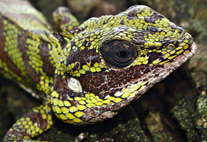Abstract
The North African population of the Black Wheatear has been treated as Oenanthe leucura syenitica for over 100 years. The type of syenitica was collected by Heuglin in June 1852 near the southern Egypt/northern Sudan border, well outside the range of the sedentary Black Wheatear. Morphometric inference and genetic analyses of partial sequences of the mitochondrial gene COI demonstrate that the type specimen of syenitica is not conspecific with O. leucura, but instead is closely related to O. lugens of the Middle East and North Africa, being most similar in plumage to O. lugens warriae of the basalt deserts of north-east Jordan and southern Syria. While syenitica was not separable in the analysed part of its mitochondrial DNA from O. l. lugens and O. l. warriae, it differs in morphometrics and plumage features from the latter. The type specimen is a first-summer bird with abraded plumage as expected for June, and may thus have been collected in its breeding range. Its morphological distinctiveness implies that syenitica might be taxonomically distinct from warriae. However, as it is known only from the type and its few associated data, we propose to treat it as a subspecies inquirenda of O. lugens. As a consequence of this, and the fact that we found no genetic or morphological differences between North African populations of O. leucura and riggenbachi Hartert, 1909, the name originally applied to the population in Western Sahara, the North African population takes the oldest available name to become O. leucura riggenbachi.

